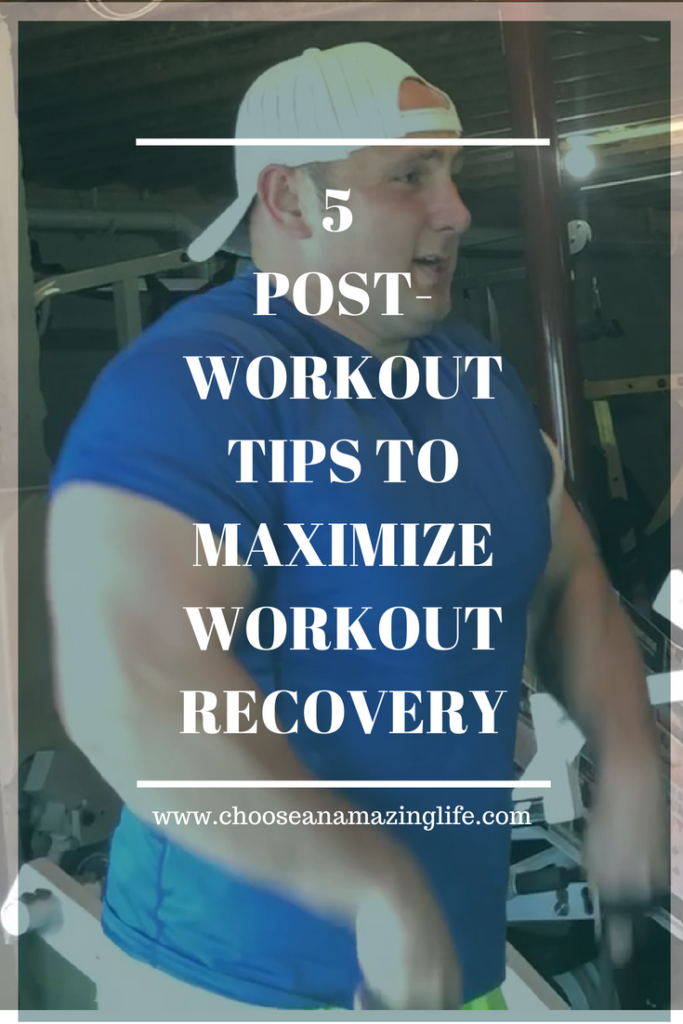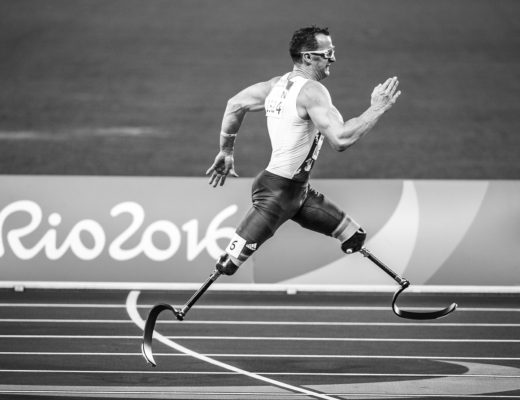
*This post contains affiliate links, including Amazon, that we will give us a small commission if you purchase from the link.
What Comes to Mind When You Hear the Phrase: “Workout Recovery?”
What steps do you usually take to experience the best workout recovery? Imagine this… you have pushed yourself to the limits physically and experienced a focused and specific training stimulus. You are refreshed, energized and your body is full of circulating pleasure inducing endorphins. Now what? Believe it or not what you do after your training session is perhaps just as important, if not more so, than what you did during the workout. Are you doing enough and taking the right steps to expedite workout recovery? To ensure maximal growth, change and body adaptation after your workout? These five tips will benefit your workout recovery.
But before you read on, do you have a great workout routine? Are you ready for a new one to change things up and focus on different muscles? Click here for my free 6 week programs to help you in achieving the body of your dreams: Free 6 Week Fat Loss Primer Program and Free 6 Week Muscle Building Primer Program
Step 1 to Workout Recovery: Take Advantage of the Anabolic Window.
There has been lots of controversy about the existence of an ‘anabolic window’ after exercise the last few years. But research still indicates the need for proper nutrition and caloric replenishment after an intense bout of exercise. Post workout protein consumption can assist in positive net amino acid balance and increased muscle protein synthesis but evidence indicates overall net protein intake throughout the day is actually more important. (https://www.ncbi.nlm.nih.gov/pubmed/24299050)
Evidence also shows that, irrespective of nutrition, high intensity resistance type training by itself increases muscle protein synthesis for up to 3hrs post-exercise before muscle tissue breakdown starts to occur. So you may have a window of 3 hrs as opposed to 30 minutes as commonly thought. (https://www.ncbi.nlm.nih.gov/pubmed/9252485)
Post-workout nutrition is designed to stop the catabolic process of tissue breakdown as well as to refill muscle glycogen stores. Ideally up to 30g of fasting absorbing carbohydrates mixed with quality protein source helps maximize the anabolic effect of your workout. A 2:1 ratio of carbs to protein has been suggested. If you are like me and you often train first thing in the morning in a fasted state, it is particularly important that you get quality calories in your system within 30 minutes of your workout. The other thing early proper nutrition will do is get your body primed to recover for another hard workout soon. No matter what some study may suggest about “3 hours,” if you are feeling ‘hungry’ and ‘spent’ after your workout the sooner you eat the sooner you experience the anabolic effects of food and the quicker you recover for the next workout.
Step 2. Recovery IS Everything.
On those same lines, it is crucial to position yourself as soon as you finish a workout to recover as quickly as possible so you can train again. You can only grow and adapt from what you can recover from. Which is why grueling, frequent 1hr + sessions are very taxing and not the best idea for natural athletes unless there is ability to recover from them.
Workouts should always be designed based on your ability to recover from them, not your ability to finish the actual workout.
This is why professional bodybuilder or fitness model workouts you see plastered in fitness magazines just don’t work for most and can cause more harm than good. If you don’t have time in your schedule for a periodic nap or are on the run and not able to have frequent nutritious meals, your actual workout schedule should reflect this. I like to schedule hard leg workouts on days when I am not going to be running around the day after or can have a 15-30 minute cat nap.
Another thing I love to do is cryotherapy. Cold showers or soaks can do wonders for your aching muscles. I personally drink up to a gallon of water after my workout to really flush out all the metabolic byproducts festering in the extracellular muscle tissue. Also if you have time to relax instead of rushing to work or to some appointment it will calm your nervous system considerably. I also like to add some magnesium post workout to experience that “calming” effect. You want your system to be in a parasympathetic or relaxed, non-stressful state most of the day as this is where anabolism occurs.
Step 3 Cycle Your Protein Powder and Don’t Overdo Pre-workout blends.
Something many exercise enthusiasts may not consider is to cycle pre-workout agents and post-workout protein blends periodically. Pre-workouts are one of the most popular supplements around. They often can significantly boost focus and energy in preparation for and throughout an exercise session. Pre-workouts generally contain stimulants such as caffeine, green tea extract, and yohimbine which, among other things directly stimulate catecholamine release from the adrenal glands. What you may not realize is that the combination of multiple stimulants, or the continued use of caffeine throughout the day, may increase your tolerance to the ingredient and lessen its effects. Try a nitric oxide enhancer instead.
Another thing to take note of is some pre-workout stimulants will significantly increase your cortisol levels for up to three hours. This is often long after the workout when your real intent is actually to reduce the amount of cortisol and calm your nervous system. Chronic exposure to stimulants can actually leave you with less energy and more fatigue in the long run if not used judiciously.
I would strongly suggest giving your system a break for a week or two every couple of months to allow your body to re-sensitize itself to the effects of your pre-workout.
Similarly, you may consider changing up your protein powders or sources every so often. If you have the same amount of protein from the same manufacturer after every workout session your body can develop a tolerance to it and it won’t have the same effect it once did just as the same workout routine over and over won’t with time. In addition to changing your protein powders I would also suggest periodically getting your protein from food and taking a break from synthetic sources. For great information about pre-workout preparations, click here: 5 Pre-Workout Tips to Maximize Workout Efficacy
Step 4. Removing Stress From Your Life Helps Tremendously With Workout Recovery
Intense athletic activity, whether aerobic, anaerobic or a combination of both promotes the production of cortisol. Cortisol has an inverse relationship with all anabolic hormones, including testosterone, growth hormone, and insulin. When cortisol is elevated, these other anabolic hormones are depressed and this can neutralize the growth-provoking effects of your activity. Research suggests brief temporary spikes of cortisol after exercise can actually be helpful. It is really the long term plasma cortisol concentrations that cause the most harm. In the long-term, excessive cortisol will encourage fat synthesis and storage, along with provoking appetite.
Ingesting carbs during or after the workout can help blunt the effects of cortisol. Phosphatidylserine is a lesser known supplement that is one of the best supplements to help reduce cortisol levels as well as improve cognitive function (You can find it here:
.
Deep breathing, meditation, yoga or other fun activities can help. (You can read more about how and why to do these here: How Meditation is Good For You and How to Meditate For Beginners Enjoying the sunshine, going to the park, having fun with your friends, family and co-workers and laughing frequently are all great ways to take the stress out of your life. Not being too hard on yourself, not expecting too much too soon and making fitness or body transformation a secondary goal to feeling good about yourself and your life are all things I have found very helpful personally as well to reduce the stress in the lives of those I work with. For more de-stressing ideas, check out this link: 30 Ways to Improve Your Life Right Now
Step 5. Consider Active Recovery Modalities
What do you do on your days off from exercise? Have you ever considered active recovery? Believe it or not stretching isn’t only important for your kids in sports but your own body transformation and recreational fitness activities also. Often muscles and fascia can become knotted or bound from overuse. Rolling out muscles with foam or semi-rigid rollers—two forms of self-myofascial release—can help remove those knots and improve the blood flow to those muscles. It also seems to allow the release of built up metabolites by improving local perfusion. Here is one of my favorite variety packs for all muscle tension release:
The upper back, the lats, the glutes and quads are muscles that particularly benefit from myofascial release. Follow up the rolling with stretching to take advantage of the increased range of motion that the rolling provides, focusing extra attention on the lats, pecs, hip flexors, groin, and calves—the most commonly tight areas. If the foam rolling is too painful I suggest a light jog for 10-15 minutes to get the muscles warmed up and then performing those stretches. Not only is stretching crucial to help prevent injuries but it facilitates maximal muscle development, and really contributes to better mind muscle connection and coordination. Most clients I see at any age have very tight hips and suboptimal range of motion of multiple joints that need a focused stretching protocol.
Another simple technique I love to employ on rest days is hanging. If you don’t have an inversion table don’t worry you can still get the benefits! You just need a bar elevated far enough from the ground to allow your feet to fully dangle. I love to hang for several minutes at a time. It is particularly therapeutic for my shoulder, pectorals and back that can often take a beating from training. Test your grip for as long as you can and then resort to wrist wraps. It is fun. The inversion table below is amazing- it gives you the added benefit of heat and massage, which both relax your muscles as well! If you can afford it, I highly recommend it!
What techniques have you found useful to make the most of your workout recovery? Comment below and don’t forget to follow us on facebook and pin this pinterest! We love to hear from you!












